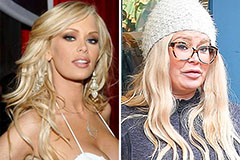The Incredible Globe of Red Wigglers: Boost Your Soil Fertility Today
These small yet efficient microorganisms transform organic waste right into beneficial worm spreadings, significantly enhancing soil health and wellness and advertising sustainable techniques. As we check out the benefits of vermicomposting and the practical steps to produce an effective worm container, the possible impact of these worms on your horticulture success becomes progressively obvious.
Comprehending Red Wigglers
Red wigglers, medically understood as Eisenia fetida, are a species of earthworm that play an important duty in enhancing soil fertility. These worms thrive in organic-rich atmospheres, such as compost heap and rotting plant product, where they eat organic waste and eliminate nutrient-dense spreadings. Their special makeup, including a segmented body and a clitellum, enables them to recreate quickly and successfully process big amounts of raw material.

The ecological importance of red wigglers extends past plain waste processing; they contribute to the dirt food web, fostering a varied community of microbes that additionally improve dirt health and wellness. Understanding the biology and actions of red wigglers is crucial for using their complete potential in lasting agriculture and horticulture practices.
Advantages of Vermicomposting
(Red Wiggler Express)Utilizing the power of red wigglers via vermicomposting offers countless benefits that dramatically improve dirt health and fertility. Among the key advantages is the manufacturing of nutrient-rich worm castings, which are an exceptional natural fertilizer. Red Wiggler Express. These spreadings contain necessary nutrients like nitrogen, phosphorus, and potassium, promoting robust plant growth and boosting crop yields
In addition, vermicomposting enhances soil structure and oygenation. The visibility of worm castings enhances dirt texture, enabling much better water retention and water drainage. This balanced wetness degree is essential for origin growth and the overall health and wellness of plants. In addition, red wigglers help damage down raw material, increasing disintegration and recycling nutrients back into the soil.
Vermicomposting also promotes microbial activity, which is important for a healthy soil community. Beneficial bacteria flourish in the existence of worm castings, aiding in the breakdown of organic products and boosting vitamins and mineral schedule to plants.
Finally, vermicomposting offers as an efficient waste administration option, lowering land fill waste by reusing kitchen area scraps and other organic materials. This not only contributes to ecological sustainability yet likewise promotes a circular economy within horticulture and farming.
Exactly How to Set Up a Worm Bin
Setting up a worm container is an uncomplicated process that can considerably enhance your composting initiatives. Begin by choosing an appropriate container, which can vary from a commercially available worm container to a basic plastic or wooden box (Red Wiggler Express). Ensure the container has adequate air flow; little holes in the lid and sides will promote air flow
Next, develop a bedding layer to provide a comfy environment for the red wigglers. This can be made from shredded paper, cardboard, or coconut coir, moistened to a wet, sponge-like consistency. Load the bin to around one-third full with this bed linens material.
As soon as the bed linen is prepared, it's time to present the worms. Red wigglers flourish in natural waste, so location them delicately onto the bed linen. Cover the worms with a light layer of extra bedding to help them acclimate.
Feeding Your Red Wigglers
Providing the best food for your red wigglers is important for their wellness and the efficiency of your composting system. Red wigglers flourish on a diverse diet plan, mainly including natural materials such as vegetables and fruit scraps, coffee premises, and shredded paper. These materials not only offer important nutrients but also add to the microbial task in the worm bin, which is essential for the worms' food digestion.
It is very important to stay clear of certain foods, such as milk products, oils, and meats, as these can draw in parasites and create unpleasant odors. Additionally, citrus peels and extremely spicy foods ought to be limited due to their possible basics to damage the worms. A balanced method to feeding entails checking the quantity of food introduced to the container, making sure that it is consumed within an affordable amount of time to stop excess waste build-up.
To advertise optimum food digestion, it is valuable to slice or shred larger food items prior to including them to the bin. This method enhances the surface for microbial action, promoting quicker disintegration and boosting the general performance of your composting system. Regularly observing the worms' feeding habits will assist you adjust their diet plan as necessary.
Using Worm Castings in Your Yard

(Lake Hickory Bait)Including worm spreadings into your yard can be completed by blending them into the dirt or utilizing them as a top clothing. The slow-release nature of these spreadings guarantees that nutrients are available to plants over an extended duration, minimizing the need for artificial fertilizers. Additionally, worm spreadings include useful microorganisms that advertise healthy dirt ecological communities, improving the overall strength of your garden.
To make the most of the advantages, goal to apply about one part worm spreadings to three components soil in your growing beds. Regular applications can bring about enhanced plant yields and much healthier plants, making worm castings a very useful resource for both amateur and knowledgeable garden enthusiasts alike. By utilizing this all-natural amendment, you can grow a thriving garden while adding to sustainable horticulture techniques.
Final Thought
In final thought, red wigglers exhibit the crucial duty of vermicomposting in enhancing soil fertility. Their ability to convert organic waste into nutrient-rich castings substantially improves dirt framework and sustains microbial diversity.
 Jenna Jameson Then & Now!
Jenna Jameson Then & Now! Jennifer Love Hewitt Then & Now!
Jennifer Love Hewitt Then & Now! Sydney Simpson Then & Now!
Sydney Simpson Then & Now! Marcus Jordan Then & Now!
Marcus Jordan Then & Now! Dawn Wells Then & Now!
Dawn Wells Then & Now!